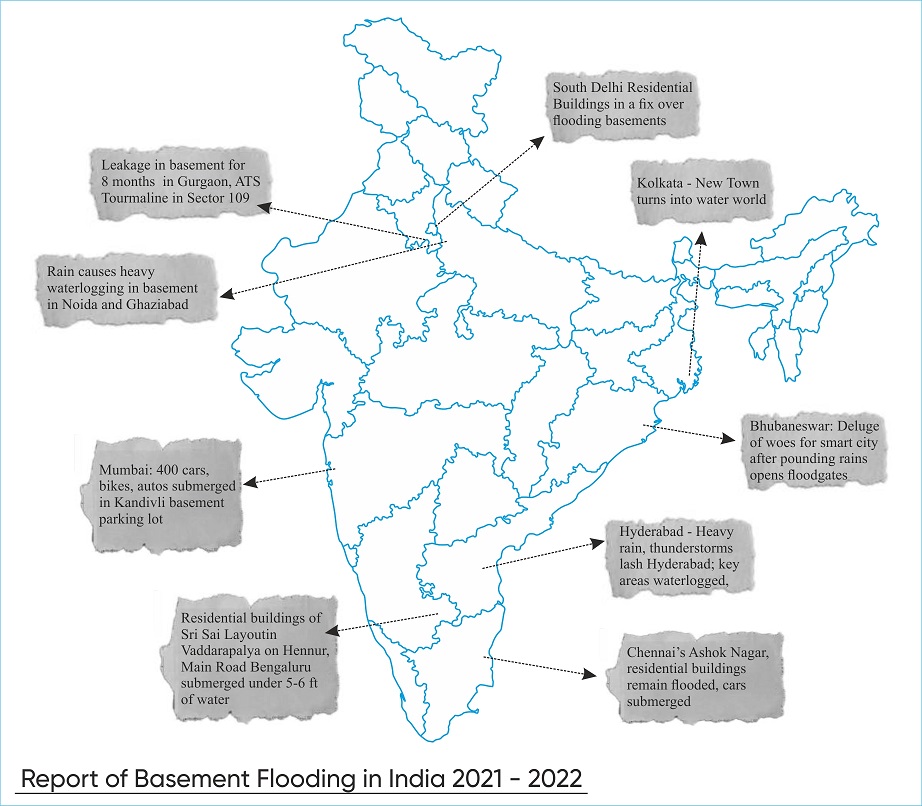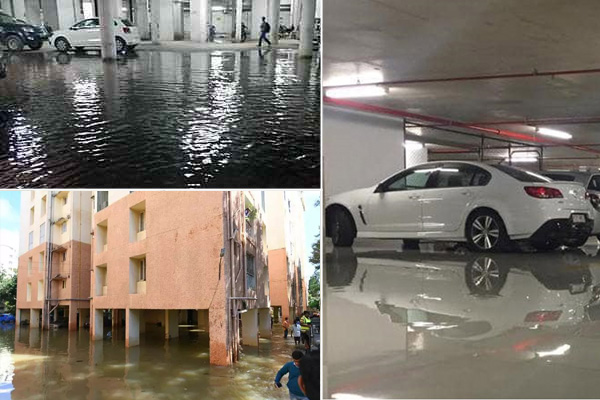India has been grappling with water woes across the country. The result has been devastating, impacting buildings and structures across India. One of the most affected areas of concern is basement flooding. Basements are vulnerable to flooding because they’re built partially if not fully below ground. The flooding in your basement can be devastating. Water has a stealthy way of getting into places you never thought possible, and its potential to damage your building. It’s important to act quickly and efficiently to reduce foundational cracks, structural integrity and mould growth. There are several causes of basement flooding, ranging from weather to burst pipes and drainage issues. Many societies, resident and commercial buildings across cities in India are grappling with this problem. The weather is beyond our control but ways to tackle them can be planned and executed ahead of time.

Causes of basement flooding
Knowing and preempting the most common causes of basement flooding is the best preventative measure you can take to keep that nightmare from becoming a reality. Common basement flooding causes include:
- Improper sealing on the flooring and walls
- Faulty stormwater drains
- Drainage tile failure
- Encroachment of drains with concrete structures
- Improperly installed downspouts
- Debris in the gutters (eavestroughs)
- Water supply line failure (broken, cracked or clogged pipes)
- Hot water tank failure
- Sump pump failure
- Location Of Home
- Clogged Gutters
- Sewer Backups
How Can You Reduce Risk of Basement Flooding?
To reduce the chances of water seeping into your basement, you can take the following steps.
- Remove debris to allow free flow of water
- Seal any cracks in the walls and floors in your basement to keep it dry
- Consider installing a basement waterproofing system like a french drain or window well drain
- Keep your gutters clean, and check the sides of your building for pooling water
- Clean your downspouts regularly, and make sure all downspouts drain 5 to 6 feet away from your exterior walls
- Dig empty borewells f 20- to 400ft around the basement area to allow natural relocation of water
- Reduce the risk of electrical hazards by relocating electrical appliances
- If you experience heavy rainfalls, avoid using water during storms
- Use gutters and downspouts to make sure water is diverted away from your home and its foundation.
- Install a sump pump
- Replace your pipes
- Install a water leak detection system.
- Seal your basement
- Install Or Service Your Backwater Valve
- Check Your Water Heater
- Check For Signs Of Pipe Damage
- Clean Your Gutters Regularly
- Fix Cracks In Foundation
Post flooding assessment
- Flush out flood water as early as possible. The greater the delay, the more the structure foundation is likely to absorb water
- Assess any damage to the structure such as cracks, wearing of plasters etc.
- Contact structural engineers for remedial measures to prevent damage
Avoid costly damage from Basement Flooring
By identifying the causes of water damage in basements, you can avoid the need for flood restoration services. However, weather is unpredictable, and it can be difficult to avoid water in your basement in an emergency such as a broken water heater or a leaking or burst pipe. Quickly removing the water and beginning the drying process is essential to lessen the possibility for mould to form, which can greatly increase the damage and cost involved. After getting the post flooding assessment from a structural engineer you can go for a waterproofing specialist with the experience.
Queries about Basement Flooding
Reports of Basement Flooding in India



